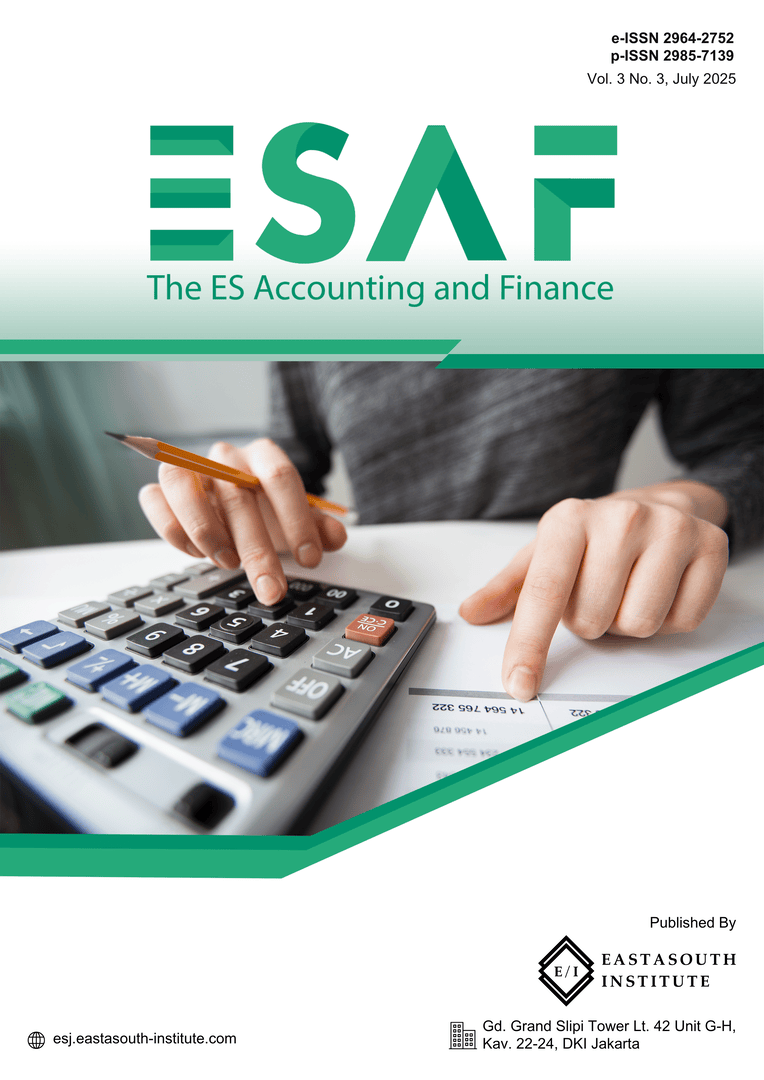Machine Learning in Financial Risk Management: Techniques for Predicting Early Payment and Default Risks
Main Article Content
Abstract
Artificial intelligence and, commonly, its subfield of machine learning (ML) has dramatically impacted financial risk management by improving the elicitation and flexibility of risk forecasts, especially concerning early payment and default risk. That is why it has become possible to speak about the existing traditional risk assessment models that no longer apply in a modern financial context, as they are oriented on historical data and are to be implemented with the help of relatively rigid frameworks. On the other hand, ML provides real-time prediction services, which leverage big datasets and learning algorithms like the logistic regression models, the random forest, and neural nets to develop proper risk profiling. The significant uses of the JHL method are for early payment prediction, default risk identification and credit scoring, which is flexible. There are benefits accrued to its use, such as increased predictive accuracy and real-time risk assessment, where it adopts a cheaper model to arrive at the results. However, its disadvantages include data privacy, security, and interpretability drawbacks. The future of ML in financial risk management trends will include the eventual use of technologies such as blockchain and AI to enhance decentralized, efficient, and secure risk management systems. As ML progresses, it is predicted that this technology will increase the efficiency, effectiveness, and individuality of risk management processes in the financial industry.
Article Details

This work is licensed under a Creative Commons Attribution-ShareAlike 4.0 International License.
References
S. Nyati, “Transforming telematics in fleet management: Innovations in asset tracking, efficiency, and communication,” Int. J. Sci. Res., pp. 7(10), 1804–1810, 2018, [Online]. Available: https://www.ijsr.net/getabstract.php?paperid=SR24203184230
G. J. Krishna and V. Ravi, “Evolutionary computing applied to customer relationship management: A survey,” Eng. Appl. Artif. Intell., vol. 56, pp. 30–59, 2016, doi: 10.1016/j.engappai.2016.08.012.
S. Nyati, “Revolutionizing LTL carrier operations: A comprehensive analysis of an algorithm-driven pickup and delivery dispatching solution,” Int. J. Sci. Res., pp. 7(2), 1659–1666, 2018, [Online]. Available: https://www.ijsr.net/getabstract.php?paperid=SR24203183637
O. Tene and J. Polonetsky, Big Data for All: Privacy and User Control in the Age of Analytics, vol. 11, no. 5. 2013. [Online]. Available: https://scholarlycommons.law.northwestern.edu/njtip/vol11/iss5/1
S. Malek, “Deep neural network models for image classification and regression (Doctoral dissertation, University of Trento),” 2018.
J. Hagel and M. Singer, Net worth: Shaping markets when customers make the rules. 1999. [Online]. Available: Harvard Business Press
P. Carmona, F. Climent, and A. Momparler, “Predicting failure in the U.S. banking sector: An extreme gradient boosting approach,” Int. Rev. Econ. Financ., vol. 61, pp. 304–323, 2019, doi: 10.1016/j.iref.2018.03.008.
A. Fadlalla and C.-H. Lin, An Analysis of the Applications of Neural Networks in Finance. INFORMS, 2001. [Online]. Available: http://www.jstor.org/stable/25062724
A. Gill, “Developing A Real-Time Electronic Funds Transfer System For Credit Unions,” Int. J. Adv. Res. Eng. Technol., vol. 9, no. 1, pp. 162–184, 2018.
M. Stone and P. Laughlin, “How interactive marketing is changing in financial services,” J. Res. Interact. Mark., pp. 10 (4). pp. 338-356, 2016, doi: https://doi.org/10.1108/JRIM-01-2016-0001.
Y. Zuo, K. Yada, and A. B. M. S. Ali, “Prediction of Consumer Purchasing in a Grocery Store Using Machine Learning Techniques,” Proc. - Asia-Pacific World Congr. Comput. Sci. Eng. 2016 Asia-Pacific World Congr. Eng. 2016, APWC CSE/APWCE 2016, pp. 18–25, 2016, doi: 10.1109/APWC-on-CSE.2016.015.
E. Angelini, G. di Tollo, and A. Roli, “A neural network approach for credit risk evaluation,” Q. Rev. Econ. Financ., vol. 48, no. 4, pp. 733–755, 2008, doi: 10.1016/j.qref.2007.04.001.
S. M. Focardi and C. Jonas, “Risk Management : Framework , Methods , and Practice,” p. 35, 1998.
A. A. Ganin et al., “Multicriteria Decision Framework for Cybersecurity Risk Assessment and Management,” Risk Anal., vol. 40, no. 1, pp. 183–199, 2020, doi: 10.1111/risa.12891.
C. Batini, C. Cappiello, C. Francalanci, and A. Maurino, “Methodologies for data quality assessment and improvement,” ACM Comput. Surv., vol. 41, no. 3, 2009, doi: 10.1145/1541880.1541883.
T. M. Oshiro, P. S. Perez, and J. A. Baranauskas, “How many trees in a random forest?,” Lect. Notes Comput. Sci. (including Subser. Lect. Notes Artif. Intell. Lect. Notes Bioinformatics), vol. 7376 LNAI, pp. 154–168, 2012, doi: 10.1007/978-3-642-31537-4_13.
R. J. Chapman, Simple Tools and Techniques for Enterprise Risk Management. 2011. doi: 10.1002/9781118467206.
X. Huang, H. Zhou, and H. Zhu, “A framework for assessing the systemic risk of major financial institutions,” J. Bank. Financ., vol. 33, no. 11, pp. 2036–2049, 2009, doi: 10.1016/j.jbankfin.2009.05.017.
M. Rubin, “Creating Customer-Oriented Companies,” Prism, vol. 4, no. 4, pp. 5–27, 1997.

